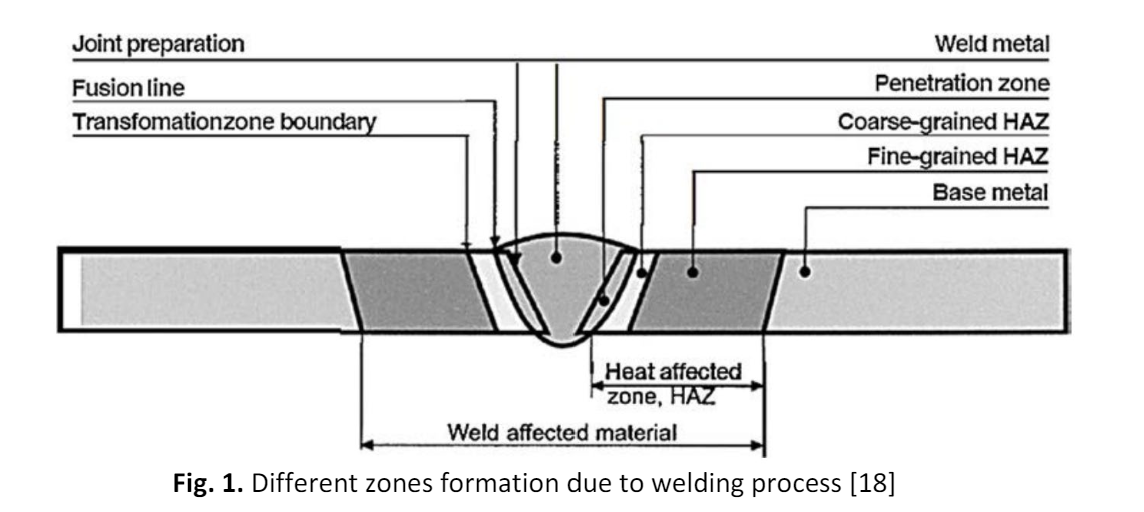Effect of Welding Heat Input on the Mechanical Properties of Mild Steel at Coarse Grain Heat Affected Zone (CGHAZ)
DOI:
https://doi.org/10.37934/aram.116.1.145155Keywords:
Mild steel, welding, heat input, bumper beamAbstract
Welding is a joining method often used in industry, especially involving mild steel. Welded areas have a high probability of failure, especially if there are defects because of the welding process. Therefore, the welding area known as the Coarse Grain Heat Affected Zone (CGHAZ) needs to be given high attention. The heat input value is the main factor that shapes the microstructure changes in the CGHAZ area. This change in microstructure results in a change in the mechanical properties of the material. In this study, the effect of heat input using the Gas Metal Arc Welding (GMAW) method on the microstructure and mechanical properties of mild steel is studied. Nine different heat input values are used by setting a combination of current (50 A, 100 A and 150 A) and voltage (15 V, 20 V and 25 V). Observations in the CGHAZ area were carried out using an optical microscope (OM). The presence of Austenite, Grain Boundary Ferrite (GBF), Widmannstetter Ferrite (WF), Acicular Ferrite, Pearlite (P), Ferrite, Cementite, Upper Bainite, Lower Bainite and Martensite phases are observed in CGHAZ. Vickers hardness test and Charpy impact test were also performed to see the change in the mechanical properties of the material. It was found that the hardness and toughness values decrease with increasing heat input values. It can be concluded that a higher heat input causes a larger grain size of the microstructure in the CGHAZ part, which causes a reduction in the hardness and toughness values of the material. In addition, it also increases the probability of cracking and reduces the integrity of the overall structure.
Downloads



























